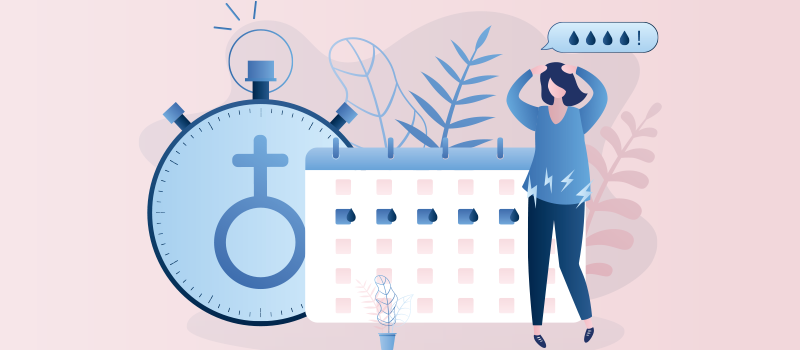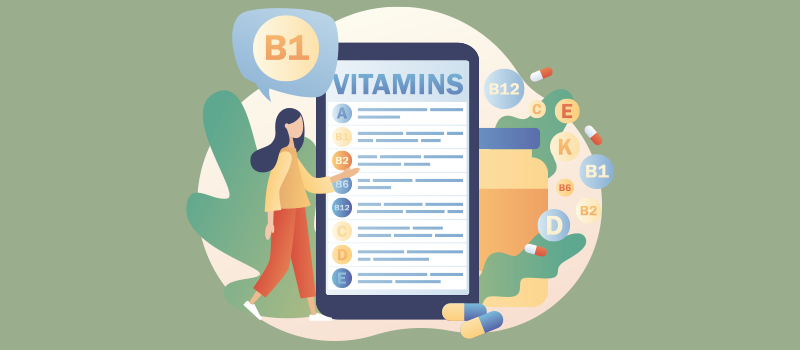IUD Side Effects to Know

An intrauterine device (IUD) provides reliable, long-term birth control that is easily reversible. Intrauterine contraceptives are of two types. There are hormonal IUDs such as Mirena and non-hormonal copper IUDs such as ParaGard. They work differently and can cause different side effects. Please continue reading to learn more.
What are the different types of intrauterine devices and how do they work?
Hormonal intrauterine devices include Skyla, Kyleena, Liletta, and Mirena IUD. A Mirena intrauterine device works by releasing a hormone levonorgestrel that thickens the cervical mucus and thins the uterine lining. It prevents pregnancy by partially suppressing ovulation and preventing the sperm from reaching the egg.
A hormonal IUD also has non-contraceptive benefits. It may be prescribed for heavy menstrual bleeding, anemia due to menstrual blood loss, and conditions such as endometrial hyperplasia, endometriosis, adenomyosis, and uterine fibroids.
A copper IUD such as ParaGard works by producing an inflammatory reaction in the uterine cavity. This is toxic to the egg and sperm and prevents fertilization.
What is a negative effect of an IUD?
Hormonal IUD
As mentioned, Mirena IUD releases a hormone. The common side effects of a hormonal IUD can therefore be similar to those caused by other forms of hormonal contraception. These include headache, breast tenderness, cramping, pelvic pain, pain during sex, irregular bleeding, especially for the first 3-6 months, mood changes, and acne.
Copper IUD
Unlike a Mirena device, a copper IUD does not release hormones. However, it can cause certain side effects, such as severe menstrual pain (abdominal pain and cramps), frequent spotting (bleeding between periods), and heavy bleeding.
Does an IUD cause weight gain?
An IUD is a form of birth control that is unlikely to cause weight gain. Generally speaking, hormonal birth control is more likely to make you gain weight compared to non-hormonal methods. With that said, to date, studies have not shown a clear link between hormonal contraceptives and weight gain. Oftentimes, the weight gain that is attributed to hormonal birth control is, in fact, due to other causes, such as advancing age or changes in lifestyle after moving in with a partner or getting married.
If you are using a non-hormonal or hormonal IUD and have experienced weight changes, talk to your healthcare provider about possible causes.
When is IUD removal necessary?
IUDs are reversible methods of birth control. Many women choose to have them removed when they desire a pregnancy. Removal may also be necessary if the IUD has reached its expiration date.
Some women have severe side effects after IUD placement, such as migraine, pelvic pain, pain during sex, or high blood pressure. If this is the case and intrauterine contraception is not tolerated, a healthcare provider can recommend another birth control method for preventing pregnancy.
Health conditions such as pelvic infection, endometritis (inflammation), sexually transmitted infections, and endometrial cancer or cervical cancer are other reasons for IUD removal.
Rarely, copper IUD or Mirena removal may be necessary because of serious complications after an IUD is inserted.
What is the most serious complication of using an IUD?
Potential IUD complications are briefly described below.
Pelvic inflammatory disease (PID)
Pelvic inflammatory disease (PID) is an infection of the organs of the female reproductive tract. It usually occurs when bacteria that cause a sexually transmitted infection spread from the vagina to the uterus, fallopian tubes, and ovaries. Risk factors for PID include young age, multiple sexual partners, and having frequent sex.
IUD placement can introduce temporary bacterial contamination into the uterus, increasing the risk of pelvic inflammatory disease. The risk of PID can be up to 6 times higher during the first 3 weeks after IUD placement. However, PID is rare in women who have had an IUD in place for more than 5 years.
Notably, studies have shown that women with a levonorgestrel-releasing IUD have a significantly lower rate of PID than those with a copper-releasing IUD.
Call your doctor immediately if you develop an unexplained fever above 101F, foul-smelling vaginal discharge, severe pelvic pain or cramping that does not get better with over-the-counter medications, heavy bleeding, or painful sexual intercourse after IUD placement.
Uterine perforation
Uterine perforation (where the IUD pierces the uterine wall either partially or fully) is a rare complication of IUD insertion. If a perforation occurs, however, it is a medical emergency, and the IUD must be removed with a surgical procedure.
Ectopic pregnancy
Studies have found that the rates of ectopic pregnancy are higher in IUD users. An ectopic pregnancy is one in which the fertilized egg implants in a fallopian tube or ovary (instead of the uterine cavity).
Ovarian cysts
Studies have shown that a levonorgestrel-releasing intrauterine system, such as a Mirena IUD, can lead to the development of ovarian cysts, which are fluid-filled sacs in the ovaries. However, these ovarian cysts usually go away on their own in 3-6 months. Most ovarian cysts do not cause any symptoms, but they can occasionally cause bloating and pelvic pain.
Who should not get an intrauterine device?
An IUD may not be right for someone with cervical, uterine, or breast cancer, uterine fibroids, unexplained vaginal bleeding, pelvic inflammatory disease, untreated sexually transmitted infections, or liver disease.
What are the pros and cons of an intrauterine device (IUD) for birth control?
The advantages of intrauterine devices include:
- Long-term non-hormonal and hormonal contraception (the device can remain in place for up to 10 years)
- Cost-effective method to prevent pregnancy
- Does not require the participation of a woman’s sexual partner
- No need to interrupt sex for contraception
- Easily reversible with a quick return to fertility when pregnancy is desired
- Can be used while breastfeeding (you must wait 6-8 weeks after delivery before inserting Mirena or another IUD to prevent injury to the uterus)
- Can be inserted at any time during your menstrual cycle
The disadvantages of intrauterine devices include:
- Heavy periods (heavy menstrual bleeding and/or more painful periods), especially in the first few months after IUD placement
- Side effects such as severe headaches (migraine), acne, breast tenderness, pelvic pain, and mood changes from hormonal IUDs
- IUDs do not protect against sexually transmitted infections, so you may need to use a condom in addition
- Safety considerations such as the increased risk of pelvic infections, uterine perforation, ectopic pregnancy, and ovarian cyst formation.
References:
- https://www.mayoclinic.org/tests-procedures/mirena/about/pac-20391354
- https://www.mayoclinic.org/tests-procedures/paragard/about/pac-20391270
- https://www.mayoclinic.org/diseases-conditions/pelvic-inflammatory-disease/symptoms-causes/syc-20352594
- https://pubmed.ncbi.nlm.nih.gov/8489756/
- https://www.ncbi.nlm.nih.gov/pmc/articles/PMC5683155/#
- https://pubmed.ncbi.nlm.nih.gov/12317373/#
- https://pubmed.ncbi.nlm.nih.gov/12383322/
- https://www.nhs.uk/conditions/contraception/iud-coil/#












SOCIAL